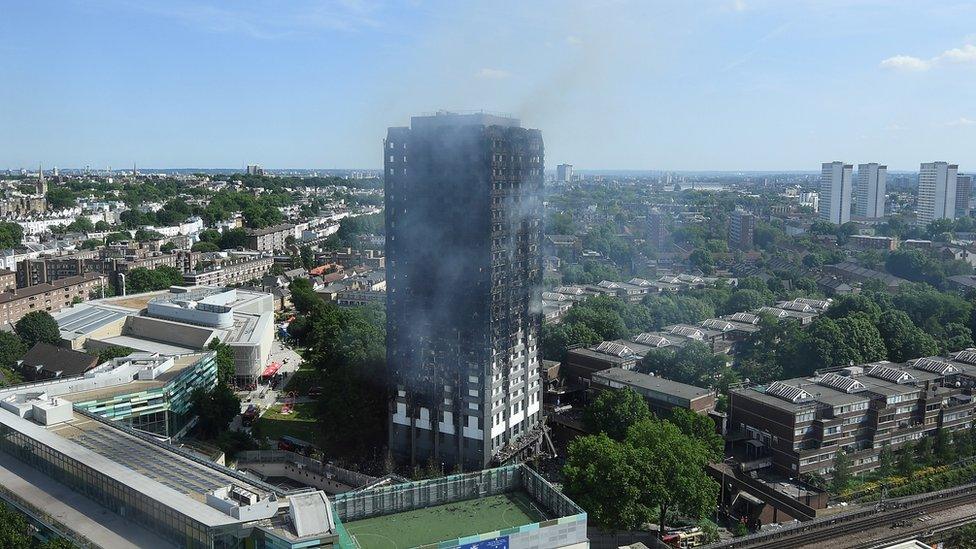Grenfell Tower fire: Theresa May calls for cladding investigation
- Published
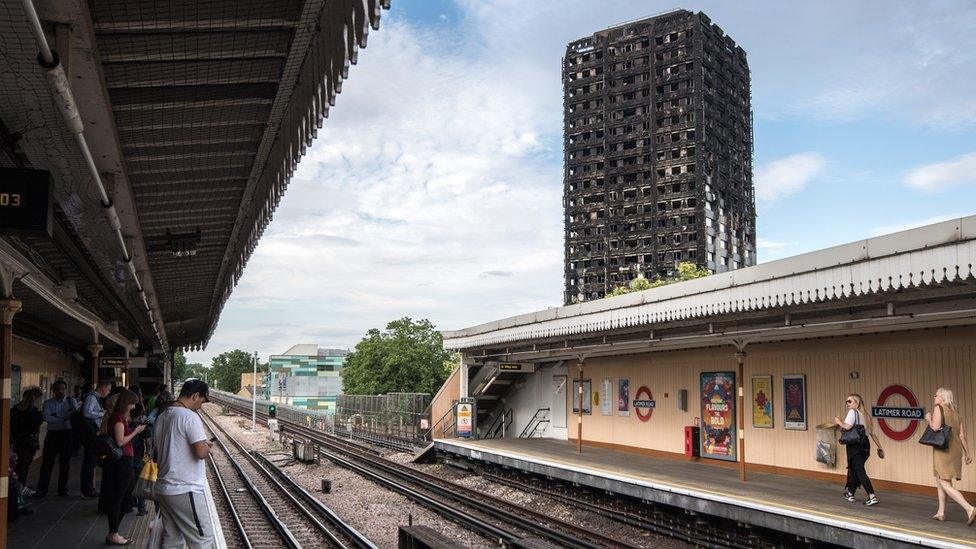
Nearby residents are scrutinising the response in the aftermath of the fire
There should be a "major national investigation" into the use of cladding on high-rise towers, Theresa May says.
It comes as it was revealed cladding from 95 towers in 32 local authority areas in England had failed fire safety tests - all of the samples submitted so far since the Grenfell Tower fire.
An expert panel to advise on immediate safety action has been appointed.
A public inquiry has already been ordered into the 14 June blaze, which is feared to have left 79 people dead.
It has also emerged that London Fire Brigade issued a warning to all 33 London councils about panels attached to the exterior of buildings in May this year, in a letter seen by the BBC.
The warning was issued as a result of the fire at the Shepherd's Court tower block in west London last year, as experts believed that insulation panels installed as part of an earlier refurbishment may have helped facilitate the spread of the fire up the side of the building.
Meanwhile, campaign group Justice4Grenfell has said it will set up an unofficial database of the victims of the fire amid distrust of the official death toll from police.
Ishmahil Blagrove, a co-ordinator for the group, said: "There are people who are still missing, people who are undocumented, we are unhappy with the 79 victims who have been recorded by the media and the police.
"We want to do some probing to find out how accurate that figure is and give them something that reflects a fuller picture."
He said that Ramadan meant there were visitors in the tower at the time of the fire and "dozens" staying in flats who "shouldn't have been there".
'No stone unturned'
Earlier, an open letter from residents, part of the campaign, demanded their voices were "heard and fully included" in the inquiry into the blaze.
The group said bereaved families and survivors should be given funding for legal representation in that probe.
People who live at the Hurstway, Testerton, Barandon and Grenfell Walks on the Lancaster West estate said in the letter: "The investigation must leave no stone unturned.
"It must identify each and every individual and organisation who must bear responsibility and accountability for this tragedy and the mishandling of the aftermath.
"There must be swift recommendations to ensure there can be no chance of a repeat of this disaster elsewhere."
The blaze, believed to have started in a fridge-freezer, destroyed 151 homes in the north Kensington block and in the surrounding area of the London Borough of Kensington and Chelsea.
The response to the fire has come under scrutiny.
Grenfell locals Layla and Hassin on how they're coping with mental health issues
Questions were raised about the cladding used on Grenfell in the immediate aftermath of the disaster and a nation-wide operation has taken place to identify and test buildings with similar cladding.
BBC home affairs correspondent Tom Symonds said: "The various regulations say you can use cladding that is potentially going to burn in a fire as long as the system, the design that you put it in as part of, is safe and that is a separate sort of test.
"The government is doing a test of the materials, so again that is a different approach and I think there is a growing feeling that the goalposts have been moved and councils don't really know what is safe now."
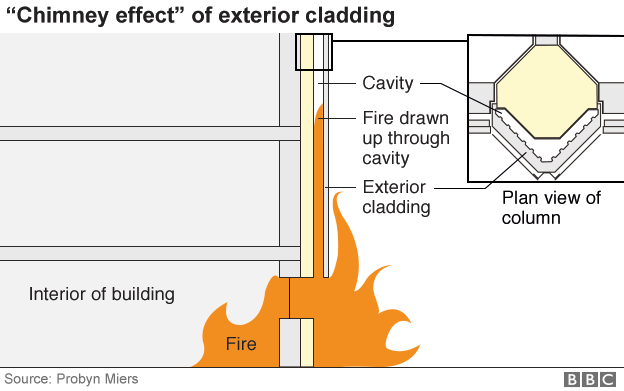
The prime minister's official spokesman said evidence suggested the use of the cladding goes back into at least the last decade.
He added that the exact nature of the cladding investigation had not yet been determined, but it could be a second phase of the public inquiry into the Grenfell fire.
The expert panel, chaired by former London Fire commissioner and former government chief fire and rescue adviser Sir Ken Knight, will be made up of building and fire safety experts and will meet this week.
"I can't do that to her": Sabah Abdullah lost his wife in the Grenfell Tower fire
Communities Secretary Sajid Javid said all councils should send in samples of cladding from tall buildings and schools and hospitals may do the same if they have concerns.
About 31,600 NHS and private hospitals, hospices, care homes and other providers were told by England's health and social care regulator, the Care Quality Commission, on Tuesday to review their fire safety.
Fire safety is one of the issues it can take into account when it inspects premises. It then tells local fire authorities about any problems found.
Meanwhile, shadow education secretary Angela Rayner has said that student accommodation providers should be urged to conduct safety checks.
Edinburgh Napier University has said it is removing cladding from one of its halls of residence, Bainfield Halls, after it found that it featured the same type reportedly used on Grenfell.
'Massive inconsistency'
The firm that supplied Grenfell Tower's cladding has ended global sales of the product for use in high-rise blocks.
But it was no "great surprise" samples had failed fire tests, director of the Centre for Window and Cladding Technology David Metcalfe said.
He said it was never "entirely clear" under the regulations whether or not the products used in cladding had to be of limited combustibility.
What a filler material consists of is not defined, he explained, and regulations do not say "specifically the cladding should be of limited combustibility".
"Timber isn't an insulation product, it's not a filler material, so there's nothing stopping you using timber on a high-rise building - but the government now are saying that all cladding should be of limited combustibility - there is a massive inconsistency there."
The government had a new "strict interpretation" of the rules, he said.
Before the west London blaze, tower block fires in England were at an at least seven-year low, figures show., external
According to newly released Home Office statistics, there were 714 fires in purpose-built blocks of 10 storeys or more in England in the 12 months to April - compared with 1,261 fires in 2009-10.
Of those high-rise fires last year, 56 spread further than the "room of origin" and three people died, compared with 12 fatalities in 2009-10.
- Published29 June 2017
- Published26 June 2017
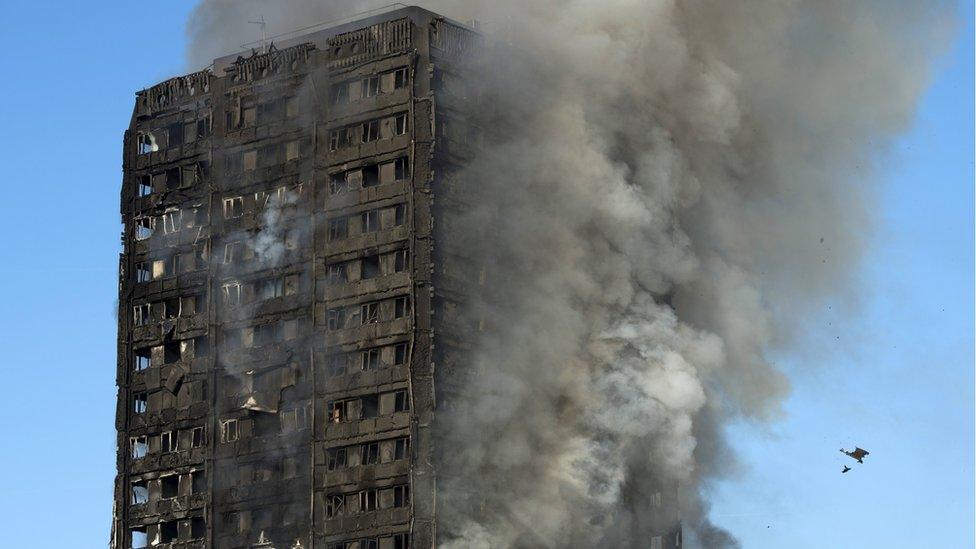
- Published19 July 2017
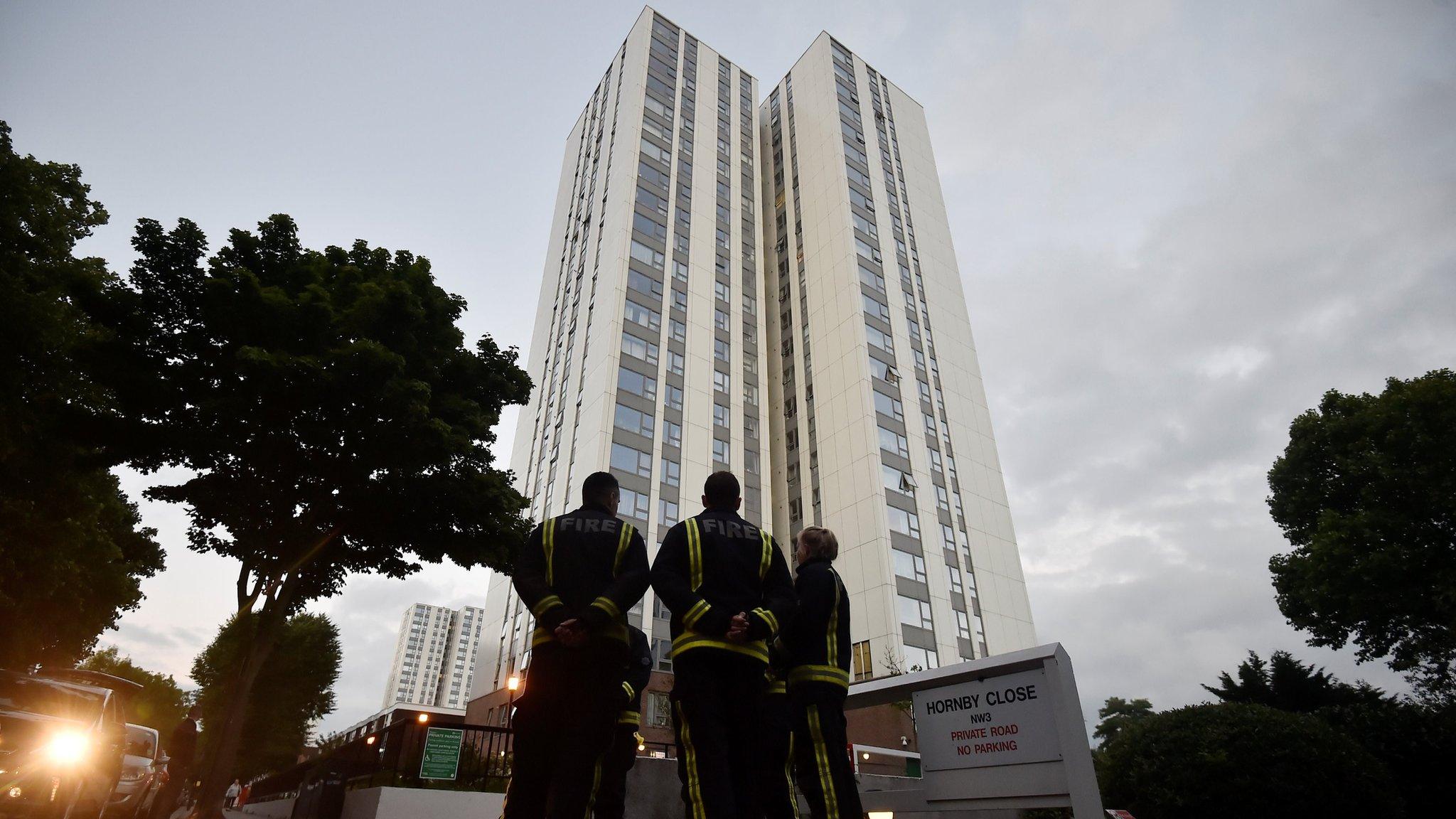
- Published29 October 2019
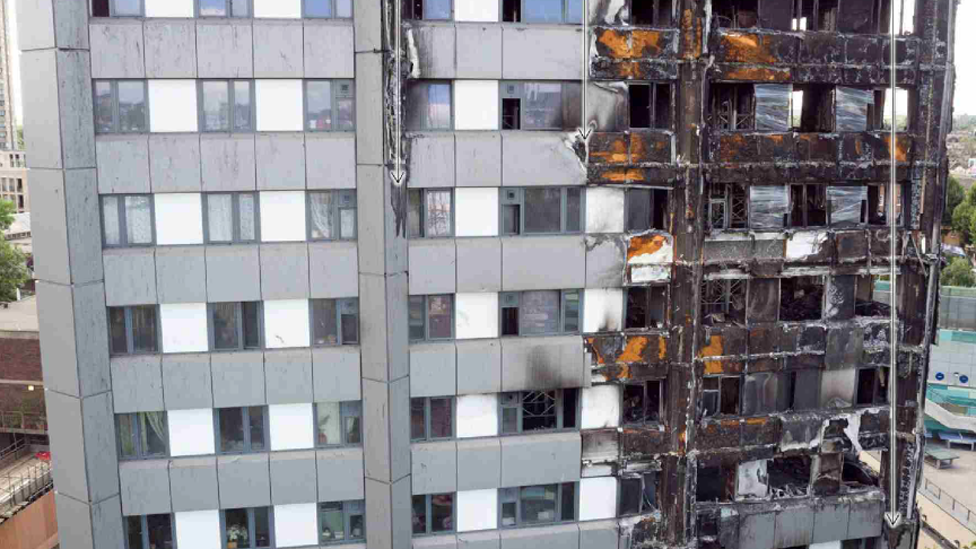
- Published19 July 2017
